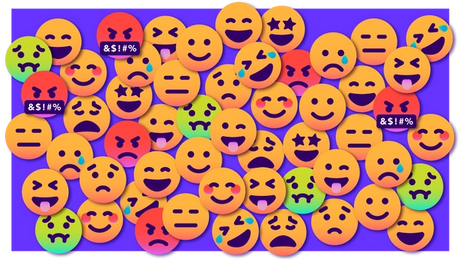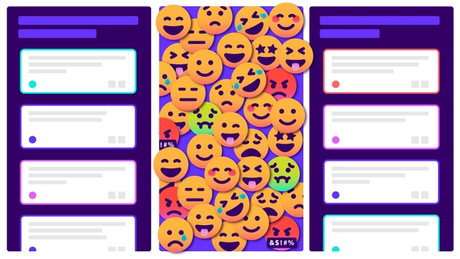Agile best practice
5 min read
Overcome common retrospective challenges with Easy Agile TeamRhythm
Thu May 30 2024
Retrospectives help create an environment where team members can freely share their wins and challenges. By encouraging this feedback, you get critical insights into what can be improved in the next iteration. But while it sounds straightforward in theory, many teams struggle to make agile retrospectives work in practice.
So if we know team retrospectives can be a great way to drive continuous improvement and deliver value – why do so many teams struggle to get it right?
The slippery slope to becoming a tick box exercise
According to Easy Agile Product Marketing Manager Tenille Hoppo, the struggle with retrospectives often lies behind two key challenges. "If you’re having the same discussions week after week, and the team can’t see anything changing, then people can become fatigued, disengaged, and bored," said Tenille. "Over time, retrospectives become less respected and less effective as a process, and eventually become nothing more than a tick box exercise".
"Then there’s the challenge around capturing actions in real-time," said Tenille. "We’ve all been guilty of having great ideas while working on something, but by the time the next retrospective comes around, the idea is gone".
The challenges around keeping retrospectives fresh, productive, and integrated with the work in Jira are behind the development of Easy Agile TeamRhythm, an app designed to overcome these common issues and help teams deliver value to their customers more quickly.
Integrating user story maps and retrospectives
"We believed if we could integrate the retrospective process right alongside the work in Jira, teams would be better able to deal with the issues blocking their progress and work more effectively," said Tenille. "So, we mapped out the groundwork as part of an Inception Week project, and soon after that, Easy Agile TeamRhythm was born".
Easy Agile TeamRhythm replaces our first app, Easy Agile User Story Maps, and integrates team user story maps with team retrospective boards. The user story maps are used for planning and managing work (including sprint planning and backlog refinement), while retrospective boards help teams do that work better. "It made sense to build on the sprint planning and backlog refinement capabilities of Easy Agile User Story Maps and introduce retrospective boards to capture and collate ideas for improvement," said Tenille. "With retrospectives colocated where work is managed in Jira, you can turn action items into Jira issues and schedule work, ensuring retrospectives are effective and valuable".
Elevating retrospectives with Easy Agile TeamRhythm
Easy Agile TeamRhythm supports teams from planning through to release and retrospectives. It covers user story mapping, sprint planning, version planning, backlog refinement, and team retrospectives.
By featuring a team retrospective board integrated alongside your Jira boards, agile teams can use the app to:
Capture feedback in real-time
Team members can capture feedback quickly and easily as they do their work. As a result, feedback and ideas don’t get lost and, instead, are there waiting for you when you run the next retrospective.
Combat fatigue with templates
You can access different templates to help change the format of retrospectives, frame things differently, and keep team members interested. This can also help teams see things from different angles and come up with new ideas.
Current templates include:
- Foundation
A highly customizable template based on the Start, Stop, & Continue model. The team looks at looks at the actions they want to introduce, those that aren't working, and what can continue into the next cycle. - Get Rhythm
A music-themed template using the 4 L’s retrospective format, to understand what is “Loved, Learned, Loathed, and Longed for”. The team calls out what they appreciate, what the sprint taught them, what went wrong, and what they would’ve wanted more of. - Space Mission
A stellar-themed template based on the Sailboat retrospective format, examining the approaches that inhibit progress, or reap desirable outcomes, and establish a direction for planning the next iteration. - Rose Blossom
A rose-themed template based on the Starfish model, that involves rating the efficacy of action items to determine the methodologies they should keep, discard, and apply in the next round.
Improve the next iteration by applying insights
The ‘Actions’ column is where you turn feedback into tangible actions and create in-built accountability. In just two clicks, you can turn an action item into a Jira issue that is automatically added to your backlog. You can then assign an owner and schedule it into an upcoming sprint or release.
“We’ve improved our communication and team alignment, which has helped give us faster results”.
Make your next release better
"Agile isn’t about wringing every ounce of work you can get from your team, and it’s also not about wasting time in unproductive meetings that don’t drive an outcome," said Tenille. "With Easy Agile TeamRhythm, we provide the framework and functionality to help share learnings, plan solutions, and take action. And as teams focus on incremental improvements, they can start working better together, feel happier in their role, and deliver better outcomes".
Like to hear more?
Tenille presented on this topic in a webinar with Atlassian Solution Partner Almarise. Watch the full presentation below.



